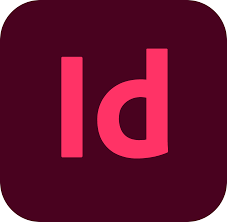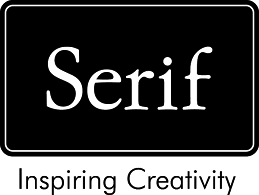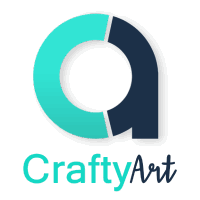Description

Adobe InDesign

Affinity Designer
Comprehensive Overview: Adobe InDesign vs Affinity Designer
Adobe InDesign
a) Primary Functions and Target Markets
Primary Functions: Adobe InDesign is a professional desktop publishing software that specializes in creating layouts for print and digital media. It is widely used for designing and publishing brochures, magazines, newspapers, flyers, books, eBooks, and interactive PDFs. Key features include layout design tools, typography controls, color management, and integration with other Adobe Creative Cloud applications such as Photoshop and Illustrator.
Target Markets: InDesign is primarily targeted at graphic designers, marketing professionals, publishers, and creative agencies that require advanced layout and design capabilities. It is particularly popular in industries related to advertising, media, print, and corporate marketing.
b) Market Share and User Base
Adobe InDesign holds a significant share of the desktop publishing market. As part of the Adobe Creative Cloud suite, it benefits from Adobe's strong brand recognition and integration with other design tools. The extensive feature set and industry-standard status make it a top choice for professionals, contributing to a large and loyal user base that spans global markets.
c) Key Differentiating Factors
- Integration: Seamless integration with other Adobe products like Photoshop, Illustrator, and Lightroom enhances workflow for users who work across different types of media.
- Advanced Features: InDesign offers a wide range of advanced tools for professional publishing, including GREP styles, anchored objects, and interactive forms.
- Cloud Services: As part of Adobe Creative Cloud, users have access to cloud storage, Adobe Fonts, Adobe Stock, and regular software updates.
- Established Ecosystem: A vast array of tutorials, community forums, and third-party plugins bolster user experience and extend InDesign's functionality.
Affinity Designer
a) Primary Functions and Target Markets
Primary Functions: Affinity Designer is a vector graphics editor used for creating illustrations, UI/UX design, branding, and marketing materials. It offers tools for vector drawing, precision measurement, typography, and export to various formats. Although it is often compared to Adobe Illustrator, it can handle both vector and raster design tasks effectively.
Target Markets: Affinity Designer targets graphic designers, web designers, and artists seeking a cost-effective yet powerful alternative to Adobe Illustrator. It appeals to freelancers, small businesses, and educators due to its affordable pricing and perpetual licensing model.
b) Market Share and User Base
Affinity Designer is part of the Affinity suite by Serif and has gained popularity as a challenger to Adobe's dominance, especially among budget-conscious users and those who prefer a non-subscription model. Its user base includes individuals and smaller organizations but is growing steadily as word-of-mouth and positive reviews spread its reputation.
c) Key Differentiating Factors
- Pricing Model: Unlike Adobe InDesign, Affinity Designer does not require a subscription. It offers a one-time purchase model, making it more affordable for users who prefer not to commit to ongoing payments.
- Performance: Known for its speed and efficiency, Affinity Designer performs well even on less powerful hardware, with features like real-time effects preview and fast rendering.
- Cross-Platform Consistency: It offers a consistent experience across Windows, macOS, and iPad, catering to designers who work on different devices.
- Unique Features: It includes features such as an advanced grid system, an easy-to-use pen tool, and smooth zoom capabilities up to over 1,000,000% for detailed work.
Comparison Summary
While Adobe InDesign and Affinity Designer overlap in certain publishing-related tasks, they cater to different segments and use cases. InDesign is the go-to for comprehensive page layout and publishing tasks, thanks to its integration with the wider Adobe ecosystem, whereas Affinity Designer appeals to those focused on vector graphic design needing a budget-friendly, high-performance solution. InDesign leads in market share among professional publishing software, but Affinity Designer’s competitive pricing and efficient features make it an attractive choice for many individuals and smaller teams.
Contact Info

Year founded :
Not Available
Not Available
Not Available
Not Available
Not Available

Year founded :
1987
Not Available
Not Available
United Kingdom
Not Available
Feature Similarity Breakdown: Adobe InDesign, Affinity Designer
Certainly! Both Adobe InDesign and Affinity Designer are popular design software tools used by creative professionals, but they cater to slightly different niches within the design community. Here's a breakdown of their feature similarities and differences:
a) Core Features in Common:
- Vector Editing Tools: Both applications offer robust vector editing capabilities, allowing users to create complex shapes, paths, and designs.
- Typography Tools: They both provide advanced typography tools, including support for OpenType features, text styles, and adjustments to kerning, tracking, and leading.
- Layer Management: Both programs feature powerful layer management systems, including layer grouping, locking, and adjustments to opacity and blending modes.
- Grid and Guide Systems: Both support grids, rulers, and guides to help with precise alignment and layout consistency.
- Export Options: They offer a variety of export options, supporting popular file formats such as PDF, SVG, EPS, and various image formats.
- Customizable Workspaces: Both applications allow users to customize their workspaces, tailoring toolbars and panels to fit their workflow preferences.
b) User Interface Comparison:
- Adobe InDesign: The interface is well-suited for desktop publishing, with panels and tools optimized for layout design, such as multi-page documents, master pages, and pagination controls. It aligns with other Adobe products, providing a familiar environment for Adobe users.
- Affinity Designer: Affinity Designer’s interface is sleek and modern, designed to accommodate quick switching between vector and raster workspaces (personas). It's known for being more intuitive for new users with its less cluttered interface compared to Adobe’s extensive panel system.
c) Unique Features:
- Adobe InDesign:
- Primarily focused on desktop publishing, it excels in creating complex, multi-page layouts for print and digital media.
- Advanced text and style management for document-wide changes, including GREP styles and automatic footnotes and endnotes.
- Integration with Adobe Creative Cloud, allowing seamless interoperability with other Adobe applications (like Photoshop and Illustrator), as well as access to Adobe Fonts and Adobe Stock.
- Affinity Designer:
- Offers a unique persona feature which lets users switch between vector (Draw Persona) and raster environments (Pixel Persona) within the same application, providing a versatile toolset for designers needing both vector and bitmap editing.
- Affinity Designer's one-time purchase model makes it accessible without a subscription, which is a significant draw for some users.
- It provides real-time preview and non-destructive effects and adjustments, enhancing design workflows with instant feedback.
Each tool has its strengths tailored to specific types of work, with InDesign being a favorite for layout and publication design, while Affinity Designer offers flexibility for varied projects that may require both vector and raster capabilities in a single program.
Features

Not Available

Not Available
Best Fit Use Cases: Adobe InDesign, Affinity Designer
Adobe InDesign and Affinity Designer are both powerful design software tools, but they cater to different needs and use cases. Here's an overview of how each tool is best utilized:
Adobe InDesign
a) Best Fit Use Cases for Adobe InDesign
-
Print and Digital Publishing:
- Ideal for Publishing Companies: InDesign is renowned for its strong capabilities in creating print layouts such as magazines, newspapers, flyers, brochures, books, and e-books.
- Marketing and Advertising Agencies: Its features cater well to creating comprehensive print and digital marketing materials that require detailed page layout and typography.
-
Large-Scale Publication Projects:
- Companies or teams engaged in projects with multiple pages or complex layouts (e.g., catalogs, annual reports) find InDesign invaluable due to its robust features for handling extensive content with precision.
-
Graphic Design Studios:
- Used extensively by professional graphic design studios that focus on both digital and print media, leveraging InDesign for projects that require high-quality and detailed designs.
-
Educational Institutions:
- Universities and colleges use InDesign for creating course materials, academic publications, and student projects that involve professional-level layout design.
d) Industry Verticals and Company Sizes
- Publishing and Print Media: InDesign is a staple in traditional publishing environments due to features specifically catering to text-heavy documents.
- Large Corporations and Agencies: Larger organizations benefit from its integration with other Adobe Creative Cloud tools, allowing streamlined workflows across teams.
- Educational and Non-Profit Organizations: These sectors use it for creating detailed reports and educational resources, where precision and quality are key.
Affinity Designer
b) Best Fit Use Cases for Affinity Designer
-
Vector Graphic and Illustrative Design:
- For Freelancers and Small Businesses: Due to its cost-effectiveness, Affinity Designer is a popular choice for freelancers and smaller companies focusing on vector graphics, logos, icon design, and custom illustrations.
-
User Interface Design:
- Designers who work with UI design for apps and web may prefer Affinity Designer for its clean interface and strong focus on vector graphics.
-
Branding and Logo Design:
- Ideal for projects that require drawing and manipulating vector paths with precision, making it a preferred option for branding and identity design tasks.
-
Digital Art and Illustrations:
- Artists involved in creating digital artwork or illustrations find Affinity Designer's precision in vector crafting and its raster integrations useful for detailed projects.
d) Industry Verticals and Company Sizes
- Creative Professionals and Freelancers: Provides professional-grade tools at a more accessible price, making it attractive for independent artists and small design studios.
- Tech Startups and UI/UX Companies: Opt for Affinity Designer for its vector capabilities and affordability, which suits the iterative nature of digital product design.
- Education and Small Enterprises: Its affordability paired with professional-level features makes it a suitable option for educational purposes and small enterprise branding projects.
In summary, Adobe InDesign is best suited for businesses and projects that require advanced page layout and publishing capabilities, while Affinity Designer is favored for vector-based design tasks, especially among freelancers, small businesses, and digital product designers. Both tools complement different industry needs, with Adobe InDesign excelling in print and publication, and Affinity Designer in vector graphics and interface design.
Pricing

Pricing Not Available

Pricing Not Available
Metrics History
Metrics History
Comparing undefined across companies
Conclusion & Final Verdict: Adobe InDesign vs Affinity Designer
When evaluating Adobe InDesign and Affinity Designer, both powerful tools in the realm of digital design, it's essential to consider each software's unique strengths, pricing structures, and target user base to determine which offers the best overall value.
a) Overall Value:
-
Adobe InDesign: This is the industry standard for desktop publishing and layout design, widely used in professional settings for creating everything from brochures to digital magazines. Its comprehensive feature set and integration with other Adobe Creative Cloud applications make it indispensable for professionals who need advanced layout capabilities and frequent need for design collaboration.
-
Affinity Designer: This software is a robust vector graphic design tool, excellent for working on illustrations, typography, and graphic design projects. It positions itself as a more affordable alternative to Adobe Illustrator, offering a one-time purchase model, which can be particularly appealing for freelancers, hobbyists, and small teams with budget constraints.
Best Overall Value: For businesses or individuals needing extensive, collaborative publishing capabilities and the ability to seamlessly integrate with other Adobe products, Adobe InDesign offers significant value despite its higher cost. However, for illustrators and those primarily involved in graphic and vector design looking for a cost-effective solution, Affinity Designer offers excellent value given its one-time purchase price and powerful features.
b) Pros and Cons:
-
Adobe InDesign:
- Pros:
- Industry standard with a vast array of features for professional layout and design.
- Seamless integration with other Adobe Creative Cloud tools.
- Regular updates and access to a comprehensive support ecosystem.
- Strong collaborative capabilities for multi-user workflows.
- Cons:
- Subscription-based model can be costly over time.
- Complexity may be overwhelming for beginners.
- Pros:
-
Affinity Designer:
- Pros:
- One-time purchase with no ongoing subscription fees.
- Highly capable vector design tool with a user-friendly interface.
- Supports both raster and vector workflows.
- Cross-platform compatibility (Windows, macOS, iPadOS).
- Cons:
- Lacks some advanced features found in Adobe software.
- Less integration with other professional tools compared to Adobe products.
- Smaller user community which may affect resource availability.
- Pros:
c) Recommendations:
-
For Users Considering Adobe InDesign:
- Ideal for professionals in the publishing industry, marketing teams, and designers who require comprehensive layout tools and frequently collaborate with others in the Adobe ecosystem.
- A solid choice if you already use or plan to use multiple Adobe Creative Cloud applications, as it offers unparalleled integration.
-
For Users Considering Affinity Designer:
- Best suited for individual designers, freelancers, and small teams focused on graphic design and illustration who seek a powerful tool without recurring costs.
- Perfect for users who prefer a one-time cost structure and do not need the extensive layout features or Adobe-specific integrations of InDesign.
Ultimately, the decision will depend on specific needs, budget constraints, and the type of design work primarily conducted by the user. Each software has its niche audience and excels in different areas of digital design.
Add to compare
Add similar companies




